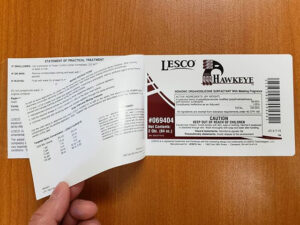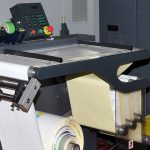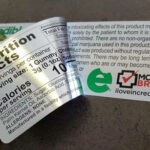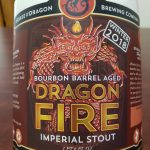Sometimes, it’s hard to figure out which extended content labels are going to be the best fit for your brand, especially if you have a new product. Hinge labels are some of our more popular product labels, especially with the longer booklet labels and peel back options.
Extended content labels are an excellent way for businesses to meet regulations and/or expand branded content that adds value to the product for consumers; however, there are some products and industries that fare better with hinge labels that peel back. First, however, let’s start with the basics.
Why Do You Need Extended Content Labels?
One of the most common questions is why extended content labels are necessary. The answer will vary depending on your industry, but for the most part, it’s all about the space.
You need extended content when you have printed information that doesn’t fit into the space of a single-layer label. Many industries – such as pharmaceutical, food, and agrochemical – must follow government regulations and labeling requirements; therefore, instead of printing this information on a box or printed sheets, you could add that information to the label with extended content.
Other industries may need some extra space for nutritional information or storytelling.
What’s the Difference Between Peel-Away and Hinge Labels?
It’s important to know what we mean by “peel-away” labels. There are single-layer, peel-away labels that have content on the front and back. These labels come off the package, and they can be easily reapplied to the packaging or bottle to look undisturbed.
There are also peel-back labels that have up to three layers and more space for content. The top layer can be peeled away to reveal the content on the back of that layer and on the top of the bottom layer.
Both peel-away and booklet labels have that extra space for brand content, with booklets offering up to 100 pages of material. So, if you need two pages, you can do a single, peel-away layer or take advantage of the extra space with the third page of peel-back labels. If you need more space, go for the booklets.
Hinge labels differ in that the top layer stays put, connected to the bottom layer at the spine like a booklet. A peel-away label that is not hinged means the top layer can be removed and reapplied to another surface, such as an envelope or window. We like to look at the peel-away top layer as a branding opportunity because it can be reapplied to almost any surface.
Products & Industries That Benefit from Hinge Labels
Often, the hinge versus peel-away saga comes down to personal preference. Do you want your customers to be able to remove the label from your bottle or package? If that’s not ideal, then hinge labels would be perfectly suitable. Industries that benefit the most from hinge labels include:
- Agricultural products
 that have strict regulations for labeling. These companies do great with booklet labels.
that have strict regulations for labeling. These companies do great with booklet labels. - Pharmaceutical and nutraceutical products with dosing instructions should probably have labels that stay connected to the bottle or package.
- Cannabis and CBD industries do well with booklet and hinge labels; however, they also do wonderfully with peel-away labels that promote their brand on the top layer. People love to decorate their things with stickers.
- Cleaning and household products may need a more extended booklet hinge label, but it would depend on the size of the product and the amount of content required. Often, peel-away hinge labels work well for these packages.
If the front of your label is all about the brand and what’s inside, such as in food packaging, a peel-away option is an excellent way to encourage your loyal customers to sport your sticky brand on their favorite surfaces like laptops, car windows, and bikes. Otherwise, hinge labels for extended content are a great way to reduce your packaging materials and make information more conveniently located.






